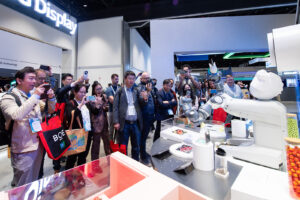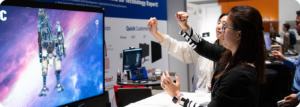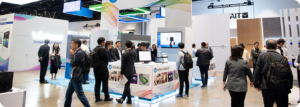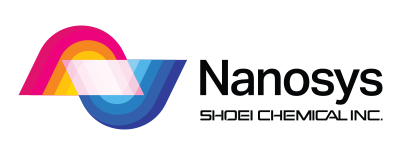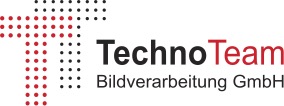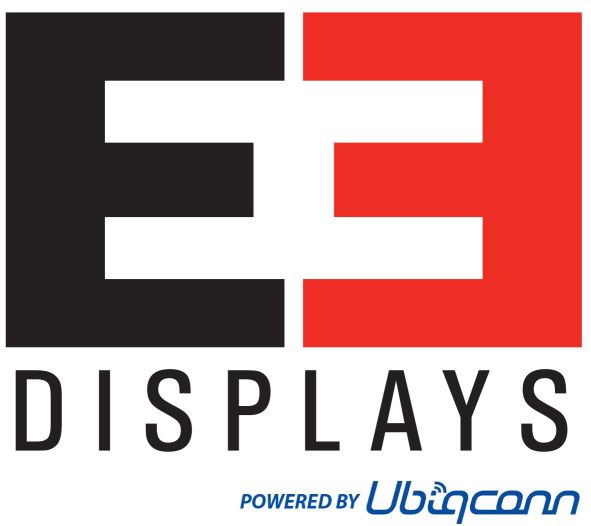Special Topics
Special topics for SID International Symposium at Display Week 2026
Special Topics at Display Week 2026
Heterogeneous Integration on Glass and Other Substrates For Emerging Applications
Heterogeneous integration for high-performance electronic packaging is rapidly becoming a mainstream activity, with glass emerging as a promising candidate for interposer substrates in multichip integrated circuit packaging. This special topic invites submissions from both display and non-display industrial and academic communities engaged in innovative work to advance the science and engineering of heterogeneous integration. This field, by its nature, covers a broad range of areas. Submissions are invited on the following topical areas, though contributions are not limited to these topics:
• Through-Glass and Other Substrates via Patterning Techniques with Emphasis on Substrate Thickness, Pitch, and Diameter Considerations, as well as Taper Angles
• Voidless Metal Filling Processes with Considerations for Low Electrical Resistivity, High-Aspect Ratio Filled Vias, and Solder-Dam Integration
• Wafer- and Panel-Scale Format Manufacturing Processes for Hetero-Integration Substrate Variants
• Dielectric Deposition Processes for Multi-Layer Metal Interconnects Addressing Warpage Issues and Bonded Stacks
• Component (Including Die Attach) and Micro-Systems Hetero-Integration, Including Integrated Circuits, with Considerations of Performance and Integration Density Targeting Emerging Applications that Demand Ultra-High Interconnect Density, Low-Latency Data Movement, and Energy-Efficient Computing for Artificial Intelligence, Edge Computing, and Neuromorphic Systems
• Packaging Technologies for a Broad Range of Applications in MEMS, 6G mmWave GHz Radios, Photonics and LEDs, High-Performance Computing, and Other Areas Addressing Lifetime, Reliability, and Critical Thermal Issues
• Novel Materials, Processes, and Equipment for Hetero-Integration Applications on Rigid and Flexible Substrates
• Multi-Physics Modeling and Simulation of Heterogeneously Integrated Systems Predicting Operation of Multi-Material Systems with Large Range of Length Scales of Interest, Taking into Consideration Reliability/Lifetime and Mechanical/ Electrical Behavior across a Broad Range of Temperatures
• Co-Design Approaches: Electrical–Mechanical– Thermal–Optical Co-Optimization Emphasizing System-Level Design Methodologies that Integrate Substrate Materials, Component Layout, and Functional Requirements Early in the Development Cycle
• Security-Aspects in Heterogeneous Integration, Discussing Hardware-Level Security in Advanced Packaging, Especially as Interposers Are Used in Secure Computing Applications
• Sustainable Manufacturing and Recyclability in Heterogeneous Integration Processes, Addressing Environmental Considerations, Material Lifecycle, and Potential Reuse of Interposer Substrates (Especially Glass)
• Standardization, Testing, and Characterization Methodologies for Glass-Based Heterogeneous Integration, Including Metrology Challenges, Test Structures, and Evaluation Protocols for Electrical, Thermal, and Mechanical Reliability
• Integration with Embedded Power Delivery and Thermal Management Features, Including Microfluidics, Embedded Capacitors, and Thermal Vias for Higher Power Density and Reduced Thermal Resistance in Dense 3D Architectures
Sustainable Displays and Green Technologies
The global reach of the display industry and its value chain has brought transformative changes to the human experience, altering how we work, communicate, learn, and spend leisure time. At the same time, the growing scale and huge output of the display industry bring proportional demands on environmental and social resources, while risking excluding portions of the world population.
This Special Topic aims to bring together contributions related to sustainable display development, achieving goals for net zero emissions, a circular economy, and an inclusive society, including areas such as:
• Display Product Designs for Repairability, Durability, Upgradeability, and Circularity
• Reduction, Recycling, or Elimination of the Use of Rare or Critical Materials such as Gallium, Cerium, Indium, or Iridium
• Sustainable Materials for Display Components and Products
• Waste-Water Treatment Technologies, Water Usage Efficiency Enhancements, and Water Resource Management
• Green Display Manufacturing Processes and Materials, Reducing Environmental and Social Impact from Operations and Chemicals
• Green Packaging and Transportation of Displays
• Technologies for Display Energy Efficiency Improvements, Measurements, and Assessments
• Technologies for Display-Users’ Health and Safety
• Technologies for Display Lifetime Extensions
• Repurpose, Upcycling, and Recycling of Waste Displays
• Life Cycle Assessment of Displays, Including the Methodologies, Hot Spots Analysis, Improvement, etc.
• Regulatory and Compliance Perspectives for Display-Related Sustainability Areas; for Instance, in the Context of the UN Sustainable Development Goals (SDGs), the EU Ecodesign for Sustainable Products Regulation (ESPR), and/or Other Regulatory Bodies
• Third-Party Sustainability Certifications (Environmental/Social) and Green Standards for Displays and Display-Containing Products
• Sustainable Procurement of Display Products
• Incenting the Display Industry to Act with Environmental Responsibility
• Display’s New Application for Other Green Areas
• A Socially Conscious Display Designed to Serve Diverse Populations with Inclusive Features and Affordable Pricing
NEW FOR 2026 | Next-Generation Materials: Perovskites and Beyond
As the display industry evolves beyond traditional OLEDs and quantum dots, novel semiconducting materials are rapidly emerging to define the next wave of display innovation. Among these, metal halide perovskites have demonstrated exceptional progress in both photoluminescent and electroluminescent performance, achieving external quantum efficiencies (EQEs) rivaling commercial OLEDs and QLEDs, along with rapidly improving operational stability and color purity, as well as other applications such as transistors, image sensors, and other applications.
This Special Topic seeks to spotlight cutting-edge research on perovskite-based emitters and other emerging light-emitting systems that lie outside the conventional OLED, microLED, and QD roadmap as well as electronic applications for display backplanes, sensors, and relevant electronics. It focuses on the scientific and technological foundations needed to realize commercially viable next-generation displays, including materials synthesis, device engineering, integration strategies, and advanced photophysics.
The session will provide a platform for materials scientists, device physicists, and industry developers to share their latest insights and foster cross-disciplinary collaboration toward future-proof display technologies.
Topics include, but are not limited to:
• High-Efficiency Electroluminescent Perovskites: Bulk, Quasi-2D, Colloidal, and in-situ Synthesized
• Scalable Fabrication and Patterning of Perovskite Light Emitters for Large-Area Displays
• Lead-Free and Environmentally Benign Perovskite Derivatives
• Novel Emitter Systems: Carbon Nanodots, Metal Nanoclusters, Thermally Activated Delayed Fluorescence (TADF) Hybrids, and Other Unconventional Materials
• Electrically or Optically Pumped Nano-Lasers and Coherent Light Sources for Display Applications
• Interface and Charge Transport Layer Engineering for Emerging Emitters
• Chiral and Spin-Polarized Light Emission in Advanced Emissive Materials
• Fundamental Photophysical Mechanisms in New Emitters: Radiative Recombination Dynamics, Exciton Transport, and Optical Coupling
• Integration of Emerging Emitters in Neuromorphic Display Platforms
• Perovskite Transistors and Memories
• Image Sensors and Bionic Eyes
• Perovskite Electronics Beyond Displays
NEW FOR 2026 | Super-Sensing XR Headsets for Enhanced awareness
Super-Sensing XR headsets could significantly enhance situational awareness by providing users with optimized vision and other sensing beyond human capabilities. These headsets or glasses can potentially offer telescopic imaging, magnification, expanded light spectrum visibility, and low-light vision as well as correcting many common ophthalmic and auditory issues. These technologies could also enable accurate distance measurement, enhance GPS navigation efficiency, support advanced communication functions, and facilitate comprehensive analysis of both immediate and extended user environments to provide relevant information.
Current smartphones already possess some of these capabilities, but next-generation XR headsets or glasses could replace most imaging and communication devices with hands-free access. With advanced multifaced imaging, AI assistance, and continuous data recording, these headsets will offer unprecedented human sensing, analysis, and communications enhancements. Furthermore, these capabilities can be continuously available to record and analyze to assist the user.
Creating such head-worn devices or smart-eyeglasses involves integrating multiple types of cameras and sensors, selecting the best images, and managing data storage and retrieval.
Solicited research papers include:
• Novel Miniature Cameras and Sensors
• Integration of Multiple Cameras and Sensors, on the Headset and Externally, often with Multiple Functions
• Enhanced Mnemonics and Life-Quality Assistance Functions
• AI Assistance Regarding what Images and Data to Prioritize, Store, Retrieve, Analyze, and Report
• External Device (IoT) Control Capabilities for Remote Devices
• Automated Eyesight Correction to Improve User Image Perception and Analysis
• Automated and Enhanced Auditory Perception and Analysis Sensing
• Other Sensors to Enhance Situational Awareness such as Enhanced Olfactory, Antigen, and Pathogen Sensing
• Ultra-High Speed and Bandwidth Communications and Data Processing for Head-Worn Devices or Glasses
Symposium Topics
The Society for Information Display (SID) encourages the submission of original papers on all aspects of the research, engineering, application, evaluation, and utilization of displays. Paper submissions are welcome for any of the following symposium topics:
(1) ACTIVE-MATRIX DEVICES: Submissions are solicited covering all novel aspects of TFTs, including semiconducting materials, structures/processing, reliability, circuit design, and the application of active-matrix electronics to displays and other related systems.
• Transistor on Silicon for OLEDoS and LEDoS
• Vertical TFT/3D-Integrated Architectures
• Ferroelectric TFTs
• 2D Material-Based TFTs
• TFTs for Neuromorphic Devices
• High-Speed and High-Reliability TFTs for Advanced Display
• Printed Inorganic TFTs
• TFTs for Automobile and Avionics
• TFTs for Memory Applications
• TFTs for Holographic and AR/VR Displays
• TFTs for optoelectronic applications
• Sensor in Display
• Emerging Active-Matrix Devices and Materials
• AMOLED Display Pixels and Backplanes • LTPO and LTPO+ Technologies
• Backplane for MicroLEDs, QD-OLEDs, and QD-LEDs
• Novel TFT Circuits and Driving Technologies
• Backplane Innovations for Ultra-Narrow Bezel Displays
(2) ADAPTIVE DISPLAY TECHNOLOGIES:WEARABLE, FLEXIBLE, AND NON-VOLATILE: Adaptive display technologies employ novel form factors, display characteristics, or system integration to produce products adapted to meet novel application needs. The subcommittee invites contributions on adaptive display technologies with a focus on form factor adaption — including wearable, flexible, stretchable, and free-form displays — and environmental adaption, such as non-volatile, reflective displays and electronic paper. Relevant display form factors include foldable, rollable, slidable, deformable, and conformable displays using any display technology enabling these characteristics. We encourage papers addressing material innovations, mechanical design, structural integration, manufacturing techniques, and use-casedriven form factor adaptation, either through mechanical or environmental approaches. We also welcome research and proof of concept devices related to:
• System Integration of Displays with Surrounding Modules or Substrates, Particularly in Wearables or Mechanically Dynamic Environments
• Material-Stack Engineering (e.g., Substrates, TFTs, Electrodes, Encapsulants), Including Heterogeneous Integration, Supporting Adaptability and Long-Term Reliability
• Manufacturing Methods that Support Scalable Production (e.g., R2R, Bonding, Low-Temp Lift-Off)
• Driving Schemes and Power Management Optimized for Flexible or Low-Refresh-Rate Systems
• Exploratory Innovations in Bio-Integrated, Conformal, or Fiber/Textile-Based Displays, Provided that the Core Contribution Enhances the Adaptive Characteristics of the Display Platform
• Environmentally Adaptive Display Technologies, such as Non-Volatile Reflective Displays that Dynamically Respond to Ambient Conditions, e.g. Brightness Modulation, Reflectance Tuning, or Bistability) to Enable Ultra-Low-Power Operation
Topics of Interest Include (But Are Not Limited to):
• Flexible OLED, MicroLED, QD-LED Displays, and Device Architectures
• Ultra-Low-Power and Bio-Compatible Displays for Wearables and Disposable Devices
• Non-Volatile Displays, including Liquid Crystal, Electrophoretic, Electrowetting, Micromechanical, Electrochromic, and Novel Emerging Display Technologies
• Integrated System Solutions for Foldable, Rollable, Slidable, Wearable, or Stretchable Displays
• Process, Materials, and Architectures for Textile/Fiber-Based Display Technologies
• Process, Materials, Architectures and Applications for Flexible Sensors
• Display-Focused Integration of Flexible Interconnects and Components
• Materials for Adaptive Display Construction: Substrates, Encapsulation, Adhesives, Barriers, and Functional Components
• Mechanism Studies for Flexible, Foldable, Rollable, Slidable, and Stretchable Display Applications and Performance Improvements
• Flexible and Solution-Based TFTs; Active-Matrix Backplane Technologies
• Packaging, Testing, and Reliability in Mechanically Adaptive Display Devices
• Scalable Fabrication Techniques for Printed and Flexible Displays
• Mechanical/Structural Design and Ergonomics for Adaptive Display Form Factors
• Hybrid Display Systems with Mechanically Responsive Elements (e.g., Shape-Adaptive Displays)
(3) APPLIED VISION/HUMAN FACTORS: New display technology has driven displays to incorporate more pixels, greater contrast, higher luminance, and richer color volume, thus enabling a wide range of new visual experiences. Submissions are encouraged that will discuss the benefits and tradeoffs of how these new display technologies, as well as novel uses of traditional display technology, can have a measurable impact on the visual experience. Topics in the following areas are particularly in demand: mitigating challenges by presenting comfortable and engaging 3D imagery (including autostereoscopic, AR, and VR form factors), effective use of a wider color volume to create a more immersive and compelling experience, and approaches to take advantage of limitations of the visual system to process or transmit display data more efficiently. Papers that discuss novel methods of user interaction and HCI with display systems are also welcomed. In addition, this year we also encourage submissions in the following technical areas:
• Wide-Color-Gamut and High-Dynamic-Range Imaging
• Visual Comfort and Health with Display Systems (including Links Between Myopia and Displays)
• Immersive Interaction with AR/VR/MR Displays
• Image Quality and Display Perception (Especially w/Stereoscopic Applications)
• Perception of Transparent Displays
• Gaming and/or Human-Contingent Displays (Including AR/VR/MR Displays)
• Perception-Driven Compression for AR/VR/MR (e.g., Foveated Rendering)
(4) ARTIFICIAL INTELLIGENCE FOR DISPLAYS AND IMAGING: The evolution of new computing technologies and the accessibility of big data are propelling advancements in machine learning (ML) and deep learning across diverse fields. This committee is dedicated to exploring the applications of artificial intelligence (AI) in all aspects of display technologies and manufacturing. Our sessions will bring together display experts and AI/ML specialists to delve into opportunities for solving challenging display problems using cutting-edge AI/ML techniques.
We welcome original contributions addressing (but not limited to) the following topics:
• Graphics, Image Processing, and Computer Vision Techniques for Displays: Innovations in Visual Data Processing to Enhance Display Performance and Functionality
• Enhanced Display Technologies with Integrated Functionalities: AI-Driven Advancements in Displays Combined with Other Capabilities for Expanded Applications
• AR/VR Applications in Specialized AI-Driven Displays: Development of AI-Integrated Systems for Augmented and Virtual Reality in Specialized Equipment
• User-Specific and Scenario-Based Image Enhancement: Tailored Optimization of Display Outputs for Diverse Users and Environments
• AI in Display Design, Manufacturing, and Maintenance: Novel Approaches to Streamline Processes Across the Display Lifecycle
• Innovations in Display Measurement, Auto- Correction, and Perception: Advancements in AI for Accurate Calibration, Correction, and Understanding Human Visual Interaction with Displays
• Enhanced User Experiences Through Display Functions and Interactions: AI-Driven Improvements in Functionality, Interactivity, and User- Centric Processes
• Smart Display Manufacturing Ecosystems and Infrastructures: Integration of IoT, AI, and Autonomous Systems in Smart Factories for Display Production
• Tools and Collaboration for AI-Enabled Manufacturing: Digital Twins, Lifecycle Engineering Copilots, Human-Machine Collaboration, and Secured AI/ML Services for Display Manufacturing
• Optimization and Testing in Display Manufacturing: Generative AI, Self-Optimizing Systems, Supply Chain Management, and Advanced Testing Methodologies for Reliable AI-Driven Display Operations
We look forward to your valuable contributions that will drive the progress of AI in displays and manufacturing.
(5) AUTOMOTIVE/VEHICULAR DISPLAYS AND HMI TECHNOLOGIES: Papers for this topic shall deal with all aspects of automotive and vehicular displays and related HMI issues, including market aspects, display and lighting technologies, head-up displays, smart displays, application issues with vehicular displays, and advanced technologies for displays, touchscreens, and gestures in vehicles as well as the user experience. Contributions in the following areas are solicited:
Displays
• Avionic Displays and Applications, Including HMD, HUD, and Interaction Means
• Smart Vehicular Display and Lighting Technologies
• Interactive Technologies for Automotive Displays
• Application Issues with Vehicular Displays and Lighting
• Metrology for Automotive Displays
• Displays for ADAS (Advanced Driver Assistance Systems)
• Head-Up Displays (HUDs), Including AR, Holographic, and Night Vision
• Automotive and Vehicular Display Market and Technology Trends
• Infotainment and Passenger Entertainment Displays
• Projection Displays (Other than HUD) for Interior and Exterior Projection
• Transparent Displays (Other than HUD) for Window, Panoramic Roof, etc.
• Camera and Rear-Mirror Display Systems
• Video Interface and Display Link for Automotive
• Exterior Automotive Displays (Other than Projection)
• Displays as Interior Design Elements
• High-Visual-Performance Displays for Automotive
• Display Readability in Variable Ambient Lighting Situations
• Optical Components for Automotive Applications
• Optical Bonding, AR/AG/AS Coating
• Display Materials Optimized for Automotive Applications
• Motorbike and Bicycle Displays and Applications
• Modeling and Simulations
HMI Technologies
• Automotive User Experience (UX), User Interaction (UI), User Delight (UD)
• Human-Machine Interface (HMI) System Solutions
• HMI for, and User Experience (UX) of, Advanced Driver Assistance Systems, Automated Driving, etc.
• Multi-Modal Input and Output User Experience (UX)
• Driver Inattention (Driver Distraction)
• Application Issues with Automotive HMIs
• Customer Acceptance and Feedback on Different Technology Displays and Interfaces
• Regulations and Trends Related to In-Vehicle Interfaces
(6) DISPLAY ELECTRONICS: All aspects of circuits (integrated or otherwise) for displays, electronic components for displays, and imaging devices, and image and video-processing algorithms will be considered.
• Algorithms and Driving Electronics for Display- Related Cameras and Sensors
• Image Compression, Enhancement, and Restoration on Display Devices
• Driving Electronics for Foldable/Stretchable/ Wearable Displays
• Optical Compensation Circuits and Algorithms
• Electronics for Touch and Interactive Displays
• Micro-Display (μLEDoS, OLEDoS, LCoS) Driving and Pixel Structures
• Display Drivers, TCONs, and New Driving Schemes
• Variable Refresh-Rate Electronics and Driving Schemes
• Machine Learning for Display Electronics
• Low-Power and Low-Cost Driving Techniques
• High-Dynamic-Range Driving Electronics
• Multiplexing Sensors, Imagers, and Communication Electronics, Including User Controls to Address These Multiple Pathways
(7) DISPLAY MANUFACTURING: Papers addressing the following areas will be considered: materials, processes, and equipment advancements related to the manufacture of display panels, components, and module assemblies.
• Manufacture of High-Resolution OLED and Other Emissive Display Panels, Fine Metal Mask (FMM), OLED Evaporation Systems, OLED Printing or Patterning Processes, and Thin-Film Encapsulation (TFE) Processes
• Manufacture of New OLED Fab-Related Equipment to Support G8 OLED Fabrication such as OLED Evaporation Systems, Mask Welding Equipment, Equipment for Other Deposition or Patterning Processes
• Inline Manufacturing Test, Repair, Metrology, and Quality Control
• Manufacturing-Related Advances Enabling Current and Emerging Displays Including Flexible, Foldable, Stretchable, Wearable Displays; 3D or Transparent Displays; Multi-Functional Display Architectures; AR/VR/MR Displays, Display Use for Large Data Transmission and Telecommunication
• Manufacturing-Related Advances such as Use of AI and ML in Display Manufacturing and Defect Detection
• Manufacture of AMLCD and Other Non-Emissive Displays
• Manufacture of e-Paper and Other Reflective Displays
• Manufacturing Equipment and Processes, Including Very Large Substrate Sizes
• Manufacturing Equipment for Front- and Back-End Processing Including Packaging, Encapsulation, Interconnect, Assembly, and Roll-to-Roll Processing
• Display-Module Manufacturing Including Panel and Module Assembly for All Display Technologies (e.g., AMLCD, OLED Display, e-Paper, Mini/MicroLED Display, AR/VR/MR Display, Projection, etc.)
• Display-Component Manufacturing (e.g., Optical Films, Color Filters, LEDs, Backlights, In-Cell and On-Cell Touch Panels, Finger-Print Sensors, Covers, etc.), Including Topics Related to High Luminance and True Black, HDR Displays, and Quantum-Dot (QD)-Based Applications
• Manufacture of Lenses, Waveguides and Other Related Optics Components and Module Processes for AR/VR/MR Displays
• Materials for Panel and Module Manufacturing, Including Substrates, Films, Adhesives, Photo- Patternable Organic Materials (for Bank Layers or Polarization Layers, etc.), Photoresists, Sputtering or Evaporation Materials, and Consumables
• Manufacturing Productivity and Cost-Reduction Topics
• Sustainable and Green Manufacturing — Reducing Energy Consumption and Waste, and Strategies for Product End-of-Life Recycling and Disposal, Product Design in Accordance with “Right to Repair,” etc.
(8) DISPLAY MEASUREMEN: Submissions are encouraged that address the electro-optic characterization and measurements of displays and display components.
• Characterization of Visual Performance of Electronic Displays Through Optical Metrology – Including HDR, Wide-Gamut, Ultra-High Bandwidth, Direct-View, Projection, and 3D Displays
• Measurement Methods for Near-to-Eye Displays (NEDs) for AR, VR, and MR applications
• Low Luminance Color Measurement (e.g. OLED and MicroLED)
• Characterization of Spatio-Temporal Artifacts such as Mura, Flicker, Motion Blur, Retained Image, etc.
• Correlation of Optical Modeling to Measured Performance Metrics
• AI as Applied to Measurement Methods and Results Analysis
• Measurement Methods for Vehicular Displays
• Methods and Models to Predict, Measure, and Analyze Display Color Performance
• Display Testing and Calibration Methods in Mass Production, Including Procedures for Consistent Performance and Improving Measurement Reliability
• Characterization of Display Materials and Components and Their Effects on Display Optical Performance
• Characterization of Detectors and Sensors Used in Display Systems
• Examination of Imaging Photometry Methods Employing High-Resolution Detectors
• Advances in Display Measurements Standards
• Calibration and Verification of Optical Measurement Instrumentation
(9) DISPLAY SYSTEMS: The Display Systems Subcommittee is soliciting original papers on the novel integration of displays into specialized devices as well as system-level aspects of electronic displays. Topics of interest include but are not limited to the following:
• AR/VR/MR: Augmented Reality, Virtual Reality, Mixed Reality, and Other Near-Eye and Tabletop Display Systems
• Novel Components and/or System Integration for AR/VR/MR: Projection Optics, Viewing Optics (Including Waveguides, Light Guides, Diffractive Optics, Reflective Optics, Flat Optics Using Liquid Crystals and Metasurfaces)
• LCOS and Light Valves for AR/VR/MR: Applications Within Projectors and Near-Eye Microdisplays
• High Bandwidth Communication with Ultra Low Latency and Power for AR/VR/MR Displays
• High-Dynamic Range (HDR) Displays: Dual-Cell LCDs, MiniLED Backlights, and All Other HDR Display System Technologies
• HDR Display Backlight Units (BLUs), Frontlight Units (FLUs), and Optical Components for MiniLED BLUs
• Telepresence Systems and Intelligent Background Subtraction for Privacy
• 3D Displays: Autostereoscopic, Light Field, Volumetric, Holographic, Aerial Displays, and Components
• Projection Systems, Arrays, Subsystems, Components, and Projection Mapping Including LCOS, Micromirror, and CGH Systems
• Projection Head-Up Displays for Automotive, Aviation, and Other Applications
• Large-Area Display Technologies: Cinema Displays, Direct-View LED Walls, Digital Signage
• Design, Manufacturing, Applications, and Novel Architectures of Projectors
• Immersive Display Systems, Dome Displays, and Cave Displays
• Standards and Guidelines Related to the Design or Evaluation of Display Systems
• Light-Guiding Components for Automotive Lighting and Illumination
• Artificial Intelligence in Display Communication Systems
• Novel Displays, Components, and Image Processing
• Transparent Displays
• Outdoor Display
(10) EMERGING TECHNOLOGIES AND APPLICATIONS: Display and imaging technologies are rapidly evolving, expanding their roles beyond traditional functions to enable novel applications and system-level capabilities. This track highlights work that: (1) introduces technologies with strong potential to shape future display and imaging systems— especially those not yet mainstream or covered by other topic areas; (2) demonstrates inventive applications of display and imaging technologies across diverse domains; or (3) explores integration of display and non-display technologies to unlock new forms of interaction, sensing, or visualization.
Truly novel and rule-breaking concept papers will be considered, but papers providing pre-commercial feasibility data and/or prototypes are encouraged. Examples of relevant application, materials, and technology areas include but are not limited to:
• AR/VR/MR/XR Platforms that Enhance User Experiences by Innovative Display Technologies, Novel Cameras and Sensors, Advanced Optics, or New Concepts Including Ultra-Thin Wearables and the Integration of Large Numbers of Sensor and Information Inputs and External Control Functions
• Applications of Meta-Surface, Meta-Optics, Micro-Optics, and Other Novel Optical Solutions for Displays and XR Headset Controls
• Imaging Applications Using Artificial Intelligence (AI) or Machine Learning (ML) —in All Areas Including Healthcare, Wellness, Performance, Diagnostics, Education, and Advanced Manufacturing
• Biological and Medical Applications Including Microscopy, Digital Stethoscopes, Medical Imaging, Remediation, Therapy, and Quality-of-Life Enhancements
• Rugged, Avionics, and Defense-Focused Display Applications in Extreme Environments Including First Responder Helmets and Spacecraft Interior Displays and Interfaces
• External Shaped Displays for Vehicle Camouflage, Artwork, or Signage
• Emerging Applications for Diverse Uses such as Drones, Museum Artifacts, Smart Luggage Tags, Amart Architectural Facades, Projection Mapping, and “e-Skins” to Endow Robots with Enhanced Perception (e.g., Touch, Temperature, Electrochemical Snsors)
• Innovative Applications for 3D Stereoscopic, Holographic, or Light-Field Displays Applied in Simulation, Education, or Remote Interaction
• Non-Display Technologies (e.g., Antennas, Lenses, LIDAR, Beam Steering, Light Field) as Applied to Future Display or Visualization Applications
• Carbon Footprint Management. Environmentally Sustainable Imaging Applications that Reduce Energy, Material Use, or Lifecycle Impact
• Advanced Materials Used in Imaging Sensors or Displays that Expand Application Scope Beyond the Visible Spectrum
• Perovskite Nanomaterials for Sensing and Liaising
• Substrate Innovations that Support Heterogeneous or Multifunctional Imaging Applications
• Sensor-Display Integration for Applications in Robotics, Surgical Systems, UAVs, or Human Augmentation
• Emerging Optical Technologies such as Photon Entanglement Related to Sensing and Imaging
• Multi-Modal User Interface Applications Combining Visual, Auditory, and Sensory Feedback
• Embedded Systems that Enable Smart or Adaptive Display Applications
• Display-Audio Integration for Novel Interaction or Accessibility Applications
• Software-Driven Display Applications such as Image Enhancement, Personalization, or Adaptive Control
• IoT, Pervasive Computing, and Edge-Networked Applications that Leverage Ubiquitous Displays
(11) EMISSIVE, MICROLED, AND QUANTUM DOT DISPLAYS: Advances in materials, processes, designs, and functions of emissive displays, including light-emitting technologies such as quantum dots, perovskites, microLEDs, field nano emitters, and nano phosphors, are sought. Emissive display-compatible sensors and smart display topics are also requested, with a focus on the integration of sensors, micro-ICs, and other unique functionalities such as LiFi elements and electro-optical elements into emissive displays.
• Emissive Display-Compatible Sensors and Smart-Display Technologies (Integration of Sensors, Micro-ICs, LiFi, and Electro-Optical Elements into the Display)
• Unconventional Displays and Alternative Applications of Emissive Display Technologies
• Photoluminescent Colloidal Quantum-Dot Technologies for Displays (Components, Devices, Materials, and Manufacturing)
• Electroluminescent Colloidal Quantum-Dot Technologies for Displays (Components, Devices, Materials, and Manufacturing)
• MicroLED Displays (Devices, Metrology, Materials, Manufacturing, Driving, and System Integration)
• Perovskites, Field Nano-Emitters, Nano- Phosphors, and Inorganic Electroluminescent Displays
(12) INTERACTIVE DISPLAYS AND SENSORS: As displays increasingly encompass the entirety of a device, so too does the need to integrate the device’s other functionality into that same area. Providing these new modalities, including human input, imaging, biometrics, acoustics, and connectivity, from within or under a display, while minimizing impact on visual performance, requires unique cross-discipline innovations in architecture, packaging, manufacturing, drive schemes, and signal processing algorithms.
Looking further into the future, this topic also solicits novel standalone sensors and transducers, which are based on display industry technologies/ manufacturing techniques, and/or have a clear path to integration with a display.
Examples include, but are not limited to:
• Under-Display Cameras (UDC, CUD) for RGB, IR, and Depth Imaging
• AI/ML Image Reconstruction Algorithms for UDC Systems
• Sensor-in-Pixel Displays, Especially Based on MicroLED or OPD
• Fingerprint Sensing, Including Optical, Capacitive, and Ultrasonic Approaches
• Sensors for ALS, Proximity, Heart Rate, Oximetry, and Other Bio-Signals
• Antenna on Display (AoD) for NFC and RF Connectivity
• LiFi Integration
• Eye-Tracking Using Bidirectional Microdisplays
• Transparent Displays Specifically Designed for Integration with Cameras
• Acoustics (Speaker and Microphone Integration)
• Haptics, Including Mechanical and Electrostatic Approaches
• Standalone Sensors and Transducers Based on Display Industry Technologies or Manufacturing Techniques
• Traditional Human Input Sensing Displays, such as for Touch, Force, Hover, and Stylus
(13) LIQUID-CRYSTAL TECHNOLOGY: Papers are sought on advances in the development of liquid crystal, including electro-optical effects, materials, applications, and devices.
• Flexible, Rollable, and Conformable LCDs
• LCDs for Outdoor Signage Applications
• High Image Quality/Super High Resolution
• Fast-Response-Time and Color-Sequential LCDs
• High-Dynamic-Range and High-Ambient-Contrast LCDs
• Wide-Color-Gamut and QD-Enhanced LCDs
• Reflective LCDs
• LC for Automotive Displays
• LC for AR/VR Applications
• LCD in Light-Field 3D Systems
• Smart Windows
• Display Enhancement
• LC-Based Spatial Light Modulators and Optical Elements
• LC Alignment Technologies
• New LC Materials
• Use of LC Technologies in Sensing Applications
• LC for Nonvisible Wavelength Applications
(14) ORGANIC LIGHT-EMITTING DIODES: Topics of interest include OLED materials and device architectures, as well as OLED display design, prototyping, manufacturing, and performance. Papers on OLED signage and OLED lighting solutions are also welcome.
• High-Performance OLED Displays of All Sizes: Micro, Mobile, Tablet, Laptop, Monitor, TV
• Light Extraction for OLED Efficiency Enhancement or Angular Emission Management
• Performance Correlations Between OLED Devices and OLED Displays
• OLED Physics and Models
• Novel OLED Materials and Architectures Enabling OLED Display Advancements, Including AR/VR Displays
• Organic + Inorganic Hybrid Materials and Devices Including Perovskites for Display Applications
• Reliability and Degradation of OLED Devices or Displays
• New OLED Pixel Architecture Including Color Filter, Microlens, etc.
• OLED Encapsulation
• OLED System Integration, Manufacturing, and Cost Reduction
• OLEDs for Lighting Applications
(15) XR FOR DISPLAYS AND IMAGING: We invite manuscript submissions that address critical aspects of developing extended reality (XR), including augmented reality (AR), virtual reality (VR), and mixed reality (MR) into a ubiquitous mainstream technology. Extended reality technologies are key enablers for the digitally reconstructed virtual world, with widespread applications in education, entertainment, engineering, healthcare, human sensory enhancement, and smart manufacturing, to name just a few. This comprehensive technical program will cover the full range of emerging innovative technologies and novel applications of XR. Papers will be organized into tracks so that attendees will be able to follow primarily XR subjects, including across multiple topics covered elsewhere within the Call for Papers.
Examples of topics of interest include, but are not limited to, the following:
• Microdisplay Technologies: MicroLED, Micro-OLED, AMLCD, LCoS, Laser Beam Scanning, Row and Block Pixel-Array Scanning, MEMS, etc. with High-Dynamic Range, High-Resolution Density, and Compact Size
• Imaging Optics: Wide Field of View, Large Eyebox and Eye Relief, Compact and Lightweight, High Optical Efficiency, Foveation, Active Focusing and Image- Shifting Optics, Corrective Vision Optics, Meta-Optics, and Deformable Displays Working with Novel Optics
• Optical Combiners: Geometric Optics, Waveguides, Holographic Optical Elements, Diffractive Optics, Polarization Devices, Pin Mirrors, etc.
• Low Power Consumption: High Optical and Electrical Efficiencies, Smart Dimmers, and Thermal Management
• 3D Effects: Light Field, Vergence-Accommodation Conflict, Multifocal Displays, Holographic Displays, and Maxwellian View
• Eye-Tracking, Localization, Mapping, and Navigation Techniques for AR/VR/MR
• Mapping and Rendering of Virtual Objects onto the Physical World
• Immersive Audio Technologies Including Human Audio Perception Enhancement Technologies
• Enhancement of Human Senses and Perception for Situational Awareness Including Novel Sensors Potentially Adaptable to XR Applications
• Overall XR Operating System Software and Novel Applications Software Including User Controls for Highly Multiplexed I/O Devices and Communications
• Computation, Graphics, Simulations, and Image Processing Including Facial, Scenes, and Object-Recognition Analysis Assistance• Machine Learning and AI Techniques Relevant to XR
• New Applications for Digital Twins
• Storage, Retrieval, and Analysis of Images and Data from Sensors, User Inputs, and Other Sources
• End-to-End System Architectures, Integration, and Latency
• Novel Form Factors: Stylish, Glasses-Like, Compact, and Lightweight. Appearance of Near-Eye Product User to Other People
• Methods and Headwear for the Recreation of Realistic Experiences such as Working in Front of Multiple Large Monitors, Peripheral Vision Cues, and Multiple-Person Experiences, among Others
• Ergonomic Consideration in Wearable Display Design

